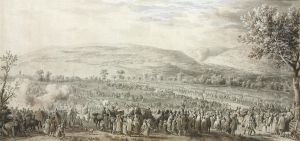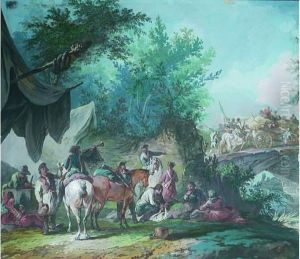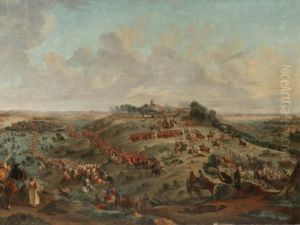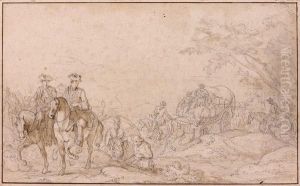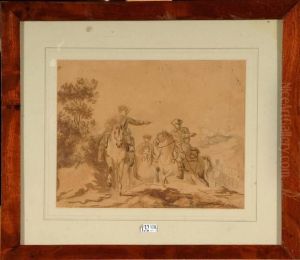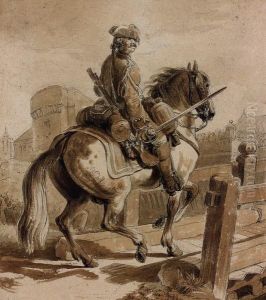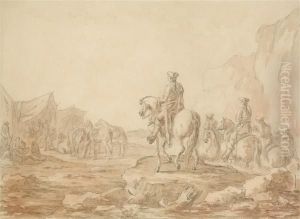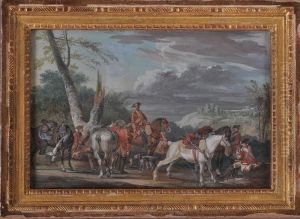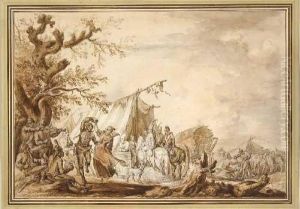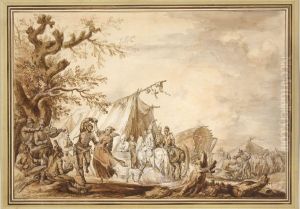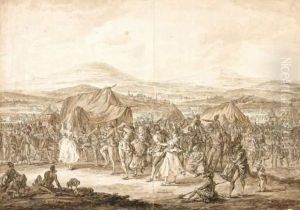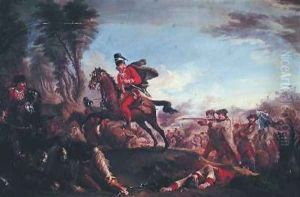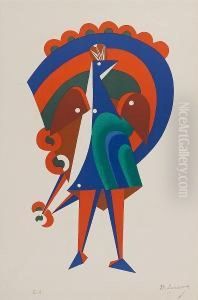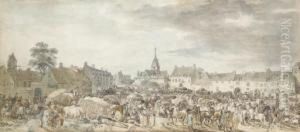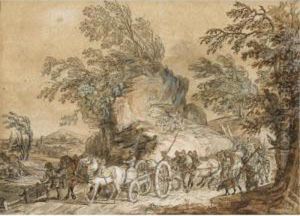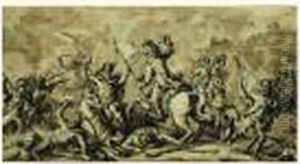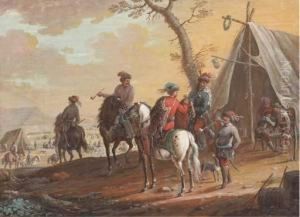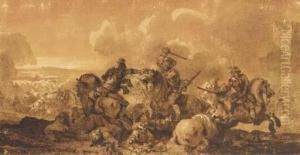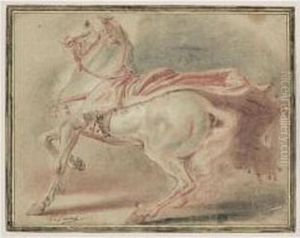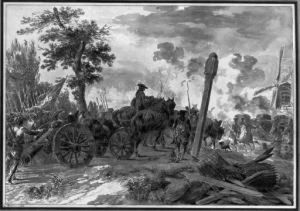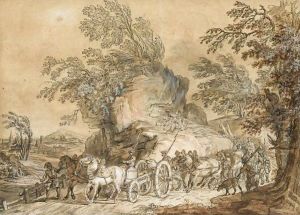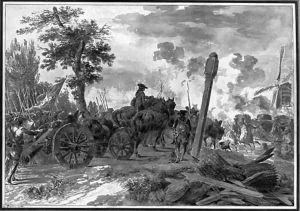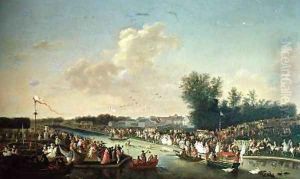Jean-Baptiste Le Paon Paintings
Jean-Baptiste Le Paon was a French painter born in 1738, best known for his portraits and historical scenes that encapsulate the grand manner of the French Rococo and early Neoclassical movements. Though not as widely celebrated as some of his contemporaries like Jacques-Louis David, Le Paon was a respected artist of his time.
Le Paon began his artistic training under the tutelage of artists like Charles-André van Loo, who was a prominent painter at the court of King Louis XV. Under van Loo's guidance, Le Paon developed a keen eye for detail and a graceful style that was well-suited to the tastes of French aristocracy.
During his career, Le Paon received commissions from various members of the nobility. His works often featured mythological and allegorical subjects, as well as scenes from contemporary life, rendered with an emphasis on elegance and refinement. One of his notable works is 'Prise de la Frigate La Pearl par la Frigate La Railleuse', an action-filled depiction of a naval battle scene.
Despite the initial success and patronage he enjoyed, Le Paon's career faced challenges due to the changing political climate and aesthetic preferences that came with the onset of the French Revolution. The rise of Neoclassicism marked a shift away from the ornate Rococo style, and artists who could adapt to the new tastes found greater opportunities.
Jean-Baptiste Le Paon's life and career were relatively short as he passed away in 1785, before the full brunt of the Revolution took hold. Nevertheless, his contributions to French art during the latter part of the 18th century provide insight into the transitional period between Rococo and Neoclassicism, and his works continue to be studied for their historical value and artistic merit.
